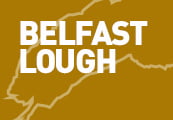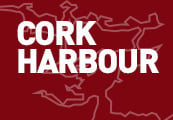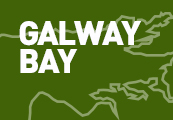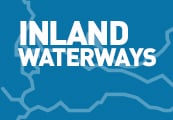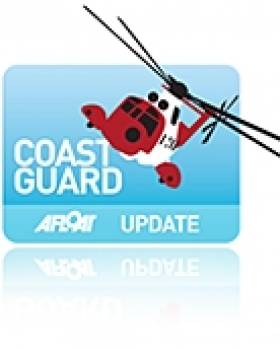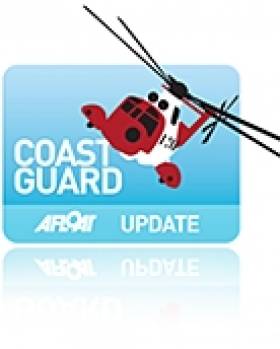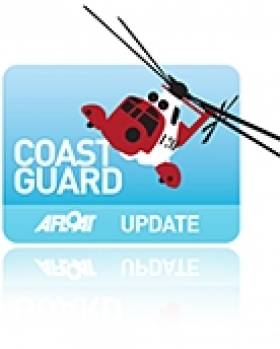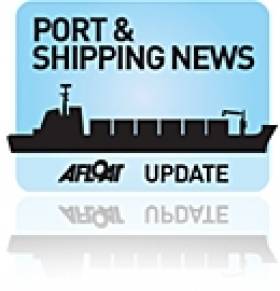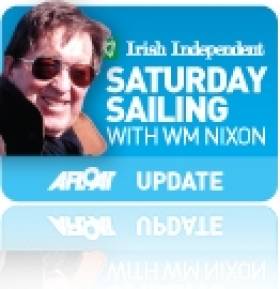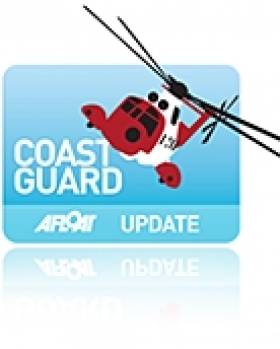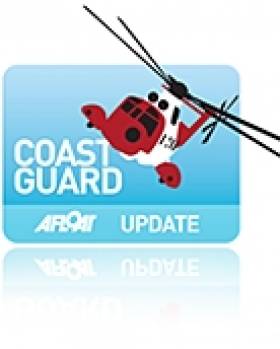Displaying items by tag: Coast Guard
Coast Guard Issues Warning as Met Éireann Issues Orange Weather Alert
#coastguard – Members of the public have been urged to heed the advice of the Irish Coast Guard as Met Éireann has issued an orange weather warning for counties Donegal, Galway, Leitrim, Mayo, Sligo, Clare, Kerry and Limerick.
An orange weather warning is forecast in west and south west coastal counties with some extremely windy, blustery conditions at times during the rest of this weekend, with winds gusting between 100 and 130 km/h at times - highest in coastal areas. The wind direction will be mainly southwest to westerly, but will be southerly for a time later tonight. An additional hazard will be high seas and waves, which will be highest during Sunday afternoon and Sunday night.
Severe southwest winds with mean speeds of 70 to 90km/h and damaging gusts of 120 to 150km/h, strongest in exposed coastal areas. Very high seas also being predicted.
The Coast Guard strongly advises the public not to go out on exposed coasts, cliffs, piers, harbour walls, beaches, promenades or any other coastal areas during the inclement weather. Huge waves can be whipped up by high seas. These waves can pose hazards to anyone close to the shoreline.
Manager of the Irish Coast Guard, Declan Geoghegan said: "The public should be extremely careful when venturing out in such conditions, they should check the weather forecast and remain away from exposed areas."
Remember to monitor weather broadcasts when travelling and heed the advice of the RSA on road use during severe weather and high winds.
Specific advice from the Coast Guard is:
• The public is advised to stay away from the shoreline and to avoid engaging in water sports
• Do not venture out unnecessarily when gale force conditions are forecast
• Avoid exposed coasts, cliff paths and coastal areas during inclement weather this week
• Owners of small vessels and fishing vessels in coastal waters should seek shelter and secure them properly with moorings.
If you do see someone in difficulty in the sea, on the shore, cliffs, lakes or rivers dial 999 or 112 and ask for the Coast Guard.
S92 Search & Rescue Helicopter Launched in Dublin
#coastguard – Minister for Transport, Tourism & Sport Leo Varadkar officially launched the Coast Guard's new state-of-the-art S92 search & rescue helicopter for the Dublin region in Weston Airport today.
This is the fourth and final Sikorsky S92 helicopters to come into operation for the Coast Guard and means the entire fleet has now been upgraded. It replaces the Sikorsky S61 which was in use until recently at Coast Guard bases in Dublin, Shannon, Sligo and Waterford.
Speaking at the launch Minister Varadkar said: "This new helicopter means the Irish Coast Guard now has one of the most modern and effective helicopter fleets in the world. The S92 is tailored specially for search & rescue operations. It has an extended range of 270 nautical miles, is faster and safer, can carry more casualties, and can fly at higher altitude and in much worse weather.
"I'm delighted that the entire Coast Guard helicopter fleet has now been upgraded. It comes after one of the busiest years ever for the Coast Guard which responded to 2,627 incidents involving fishing craft, leisure vessels and mountaineers. A well-equipped and well-resourced Coast Guard can represent the difference between life and death for anyone in trouble at sea or on land.
"The new helicopters also allowed the Coast Guard to expand its role in providing emergency medical transport for the HSE. Last year the Coast Guard performed 253 aeromedical missions and 159 offshore island medical evacuations.
"This is a good occasion to pay tribute to the dedicated helicopter crews who work tirelessly to rescue lives all year round, and also the hundreds of volunteers on Coast Guard and RNLI vessels, mountain and cave rescue teams. It wouldn't be possible to provide the same level of emergency response without these volunteers. That's also why we have the highest ever allocation of €67.9 million for the Coast Guard in 2014 to finance the provision of critical search & rescue services."
Coast Guard Director Chris Reynolds said: "This has been an exceptional year in terms of the number of incidents, but there has been significant progress in terms of modernising and further developing the Coast Guard. The new helicopter fleet will greatly enhance our capacity to provide a first-class response to all emergencies in the year ahead, whether off-shore and inland."
The Coast Guard also announced a competition to name all four of the new helicopters. The nationwide competition will kick off next week and will be featured on Clare FM, Ocean FM, FM104, Q102 and WLR, including their Facebook sites. Listeners will be invited to send in their suggestions to these radio stations. The aim is to raise awareness locally of the new Coast Guard helicopters, and to inform people about how best to alert the Coast Guard or other emergency services in the event of an incident.
Enhanced medical capacity of Sikorsky S92
The S92 and its well-trained crews including State-registered paramedics can now provide a first class medical service in emergencies and for medical transfers.
Inter-hospital transfers, donor organ recipient transfers, specialist medical teams can now be transported in this modern, reliable and safe aircraft which with its large multi role cabin and rear access ramp which can accommodate stretchers, hospital trolleys, incubators, equipment and personnel .
It can also transfer specialised Ambulance Response and Mountain Rescue teams to an incident anywhere in the country at very short notice, for example train or bus crash or RTA (road traffic accident) requiring multi casualty evacuation.
The Coast Guard has surveyed over 50 landing sites countrywide but has focused mainly on needs in areas where road transport may not benefit the patient if urgent transport was required, especially in terms of transferring people to a centre of excellence within the 90 minute window which is the requirement in the majority of cases when a casualty needs immediate medical attention at a nominated medical centre as directed by HSE staff.
The area of operation in the Irish EEZ (Economic Exclusion Zone) will also be expanded to nearly 300 miles offshore and using the S92's satellite communications, long-range and discreet communications suite, which means that casualty information can be transmitted to the receiving hospital.
Technical information on Sikorsky S92
The capability to be on-scene to a maritime incident in any weather conditions in a shorter time period is largely enhanced due in the main to four main attributes of the aircraft:
Speed: Up to 150kts and doesn't lose speed at altitude, will carry 22 casualties at max range with twin engines each delivering 2500 SHP.
Range: Will have an ROA of 270mls from Waterford and can enhance that with auxiliary tanks.
De-icing: In adverse weather where rotor icing is an issue this aircraft can fly at 10.00ft in conditions of minus 40dgs C.
Performance: Modern reliable engines which deliver more power coupled with three programme linked navigational software , searchlight capability of 30 million candle power , dual high speed winches, high resolution picture zoom, memory mapping, adjacent aircraft detection capability, hi-tech communication systems, large multi role cabin, HEMS licenced, 8 passenger seats, reliable single engine performance, enhanced hover performance and in-flight homing equipment.
The Department of Transport and Coast Guard are members of the Marine Safety Working Group which promotes the importance of water safety for professional and leisure users.
Initiatives launched in 2013 included:
• Slipway signage advising people to use a Personal Flotation Device (lifejacket).
• Launch of new safetyonthewater.ie website
• New Poster Campaign promoting the use of Personal Flotation Devices and communication/alerts devices.
• Promotion of Water Safety on RTE's Search & Rescue show and a new Coast Guard water safety advertisement for TV.
• Wristband IDs for children using the beach or other recreational facilities.
The Marine Safety Working Group comprises:
Irish Coast Guard (IRCG),
Irish Maritime Administration of the Department of Transport, Tourism & Sport,
Irish Water Safety,
Waterways Ireland,
Health and Safety Authority,
Royal Lifeboat Institution,
Bord Iascaigh Mhara
Met Eireann
Irish Sailing Association(ISA).
Canoeists Rescued After Lough Neagh Capsize
#canoe – Three canoeists have been pulled from the water after getting into difficulty in Lough Neagh.
Belfast Coastguard received a call on VHF channel 16 just after 1pm yesterday afternoon reporting that three canoeists had fallen into the water between Rams Island and Sandy Bay. Conditions on the water at the time were described as choppy, with a southerly wind of force 4 (13–17 mph).
The Kinnego Coastguard Rescue Team along with the Kinnego and Ardboe Independent Rescue Boats were sent to the scene. The three, who were all wearing lifejackets, were rescued from the water by a sand barge that was close by at the time. They were then transferred to the Ardboe rescue boat, and taken ashore where they were met by Coastguard Rescue Officers and passed into the care of the Northern Ireland Ambulance Service.
Liam Colquhoun, Watch Manager at Belfast Coastguard, said:
"These three canoeists all had lifejackets on, but unfortunately they weren't wearing wet suits or any type of gear that would help keep them warm. They were passed into the care of paramedics showing signs of hypothermia.
"We always recommend that canoeists and kayakers are well prepared before setting out. Check weather and tides, wear a buoyancy aid, suitable clothing and carry a VHF marine band radio with you. Where there is good network coverage then it is worth carrying a mobile phone in a waterproof bag.
"Call the Coastguard if you get into difficulty, preferably via channel 16 on your radio or if not by calling 999 on your mobile and asking for the Coastguard."
Minister for Transport, Tourism & Sport Leo Varadkar has published his priorities for 2014 with a number of marine targets on his list. Varadkar wants to transfer of some ports to local authority control, and in changes to the Merchant Shipping (Registration of Ships) Bill, there are proposals to introduce a level of boat registration for leisure craft.
After a busy year for the Coasty guard in 2013, the Minister has also said he wants to develop and implement a 'Safety at Sea' strategy to reduce the number of marine fatalities and casualties.
"This year my focus is on developing new projects across all three areas of Transport, Tourism & Sport, while consolidating progress already made. Priorities include starting work on the Gort-Tuam motorway, targets to increase the use of public transport, reducing road fatalities, and moving Luas Cross City in Dublin to full construction stage.
"In tourism, we will build on The Gathering and focus on increasing visitor numbers to Ireland by 4%, and tourism revenue by 8%. There will be a strong focus on sports tourism and outdoor tourism with the Giro d'Italia, Croke Park Classic and the Wild Atlantic Way. I will also publish new tourism and aviation policies.
"The foundations will be laid for our bid for the Rugby World Cup. Work will start on the National Indoor Arena at the National Sports Campus in Dublin, and we will publish a new Masterplan for Sport. Other key projects include finalising the merger of Shannon Airport with Shannon Development, and the NRA with the RPA. Most importantly, there will be a renewed focus on road safety, and we will also start testing new roadside drug testing equipment."
Priorities for 2014
Contribute fully to the Government's efforts to reduce the deficit, generate economic growth and increase employment;
Publish new Tourism and Aviation policies and begin work on a Masterplan for Sport;
Publish/Enact the following legislation:
Vehicle Immobilisation (Clamping) Bill,
State Airports (Shannon) Bill,
Roads Bill (NRA/RPA merger),
Sport Ireland Bill,
Harbours Amendment Bill (transfer of ports to local authority control),
Merchant Shipping (Registration of Ships) Bill.
Lay the foundations for a bid for the Rugby World Cup;
Develop and implement a 'Safety at Sea' strategy to reduce the number of marine fatalities and casualties;
Renew focus on Road Safety to reduce the number of deaths and serious injuries in 2014 including the enactment of the Road Traffic Bill and the introduction of equipment to enable roadside testing for drivers under the influence of drugs;
Increase the number of overseas visits to Ireland by 4% and revenue by 8%;
Commence works on the Luas Cross City Project and ensure that disruption in the City is well handled and minimised in so far as possible;
Construction to begin on Gort-Tuam Motorway and progress the next bundle of PPPs to tender (Wexford);
Work with NTA, CIE, Luas and other transport operators to increase the number of people using public transport by 2% ie 5 million passenger journeys;
Provide support for a number of flagship Greenways;
Review the National Cycle Policy Framework;
Develop and promote the Wild Atlantic Way at home and abroad;
Make new allocations for facilities and equipment under the Sports Capital Programme;
Develop facilities at the National Sports Campus including the commencement of work on the National Indoor Arena;
Finalise the implementation of the new Rural Transport Programme with the establishment of 18 Transport Coordination Units co-located with local authorities;
Commence the Taxi Regulation Act in conjunction with adoption of implementing regulations by NTA;
Implement the recommendations of the Speed Limits Review;
Launch an online facility for Road Haulage Operator Licence applications;
Develop a road charging scheme for HGVs;
Publish a Roadmap for the transition of transport to a low-carbon future and a Strategic Framework for Investment in Land Transport ensuring that priorities for future capital investment are evidence-based;
Provide City Bikes in Cork, Limerick and Galway;
Extend the LEAP card to Cork and Galway;
Map the future development of Rosslare Port.
Tidal Surge Warning Issued By NI Coast Guard
#coastguard – Belfast Coastguard are issuing a warning following the Met Office forecast for rain during the remainder of Sunday and for strong winds or gales on Monday. The Northern Ireland and Scottish Coastline is expected to get hit with strong winds and high tides to produce large over-topping waves and another tidal surge, with the east coast particularly at risk.
Belfast Coastguard Rescue Co-ordination Centre manager, Steven Carson, said:
"With one of the worst tidal surges in recent years, we would urge members of the public to take extra care along our coastline at this time. Please stay away from coastal paths, sea walls and cliff edges. These types of conditions, with choppy seas and large waves, are likely to be with us for a few days yet, so please don't take risks. If you do get into difficulty, or spot someone else in trouble, call 999 straight away and ask for the Coastguard."
Port of Cork Tug to Rendezvous with Drifting Bulk Carrier off Kinsale
#shipdrifting – A bulk carrier ship registered in Bermuda is drifting off the Old Head of Kinsale in Co Cork in strong winds and big seas.
The 108-metre vessel, Abuk Lion, is en route from Aughinish in Co Clare to St Petersburg in Russia. She is fully laden with bauxite. The vessel raised the alarm at around 3pm after its main engine failed.
The Coast Guard has sent a tug from the Port of Cork to assist the Abuk Lion. The tug is expected to rendezvous with the vessel at around 3am.
RTE News reports the Coast Guard is monitoring the situation and the Coast Guard helicopter in Waterford remains on stand-by.
Conditions at sea are bad, with Force 8 winds and swells of up to six metres. There are 13 people on board the Abuk Lion. They are not believed to be in any danger at this stage
Christmas Carol Could Save Your Life, Says Coastguard
#coastguard – Her Majesty's Coastguard is giving you the gift of safety this Christmas. Coastguards have produced their very own Christmas carol video, with 12 top safety tips
Last year, Coastguards dealt with 430 search and rescue incidents over the Christmas and New Year period ( 21 December 2012 – 2 January 2013).
Call outs ranged from dogs over cliffs, people stuck in mud, walkers cut off by the tide and broken down boats to Coastguard Rescue Officers supporting Christmas Day swims.
Richard Martin, Chief Coastguard, says:
"Her Majesty's Coastguard responds to calls every day of the year, sending out rescue teams in all weathers and often at unsocial hours. Christmas is no different.
"But this festive season we created our very own version of '12 Days of Christmas' to make sure people remember some of our key safety messages.
"These include checking the weather and tide times before setting out. The last thing you want to do on that Christmas Day morning stroll is to become cut off by the tide and miss out on lunch.
"If you're taking the dogs out for a walk on Boxing Day, make sure they're on a lead, and try not to go too close to cliff edges as they could be slippery or crumbly.
"We'd like to take this opportunity to wish everyone a fun and safe Christmas. But remember, if you do get into difficulty at the coast, call 999 and ask for the Coastguard."
What Has Happened to Sailors' Traditional Self–Reliance At Sea?
#safetyonthewater –Can it really be true that lifeboat call-outs in Ireland in 2013 – most of them for recreational boating of some sort - showed a staggering increase of 43% over 2012? W M Nixon discusses the disturbing figures, and considers whether it is possible to re-build the traditional amateur seafaring tradition of competence and self-reliance.
Time was when the most respected sailing folk, the people with the highest standards in their boats and in their use of them for their dedicated style of seafaring, were accustomed to sail the sea on the principle that they would much rather drown than cause any inconvenience or danger to other seafarers in any way whatsoever.
This applied particularly in the matter of being rescued. Being rescued just wasn't done. It was a sign of appallingly poor seamanship. Indeed, having what other people might describe as an adventure of any kind was frowned upon. "An adventure" was looked upon by the pioneers of cruising - just as it was looked upon by their contemporaries, the top explorers - as evidence of incompetence.
It was an admirable if impossibly idealistic attitude, which had its roots in the earliest days of amateur seafaring. In that distant era, the first very few pioneers were venturing forth for pleasure on seas where working people with much less in the way of economic resources were struggling to make a usually poor and often dangerous living as fishermen. To emphasise the difference, pleasure sailors only fluttered about the place in summer like butterflies, whereas those who worked the sea in small boats had to face its ferocity all year round.
Also sharing the sea were the crews of cargo carrying vessels whose demanding owners did not welcome tales of their vessels being delayed and the valuable cargoes put at risk, even for the shortest possible periods, in order to assist or rescue some incompetent amateur. As for the regulators of the sea, the naval ships and the revenue cutters, they were naturally suspicious of people going about their inexplicable business with "pleasure" as their reported objective, sailing hither and yon in their strange little vessels.
They undoubtedly were "little" vessels, as the new sport of cruising with its codes of a high standard was developed by the emerging middle classes of the 19th Century. Unlike the aristocracy and monarchy, who would sail the sea in large yachts with crowds of attendants and everything – including rescue if needs be - done in a very public manner as part of the grand life's rich tableau, the middle classes valued privacy above everything else.
Thus the code of self-reliance in cruising evolved, propounded by folk like Richard Turrell McMullen, who developed the principle of total self-reliance to such an extent that even in coastal waters he cruised single-handed in his final years. And even when pleasure boats numbers and rescue services had developed to an impressive level in the late 20th Century, the "shame of being rescued" was still a very potent attitude which encouraged high standards in boat maintenance and seamanship.
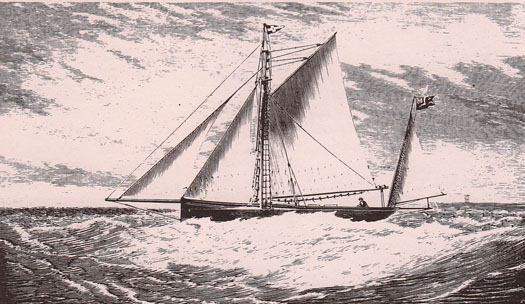
Pioneering seafarer Richard Turrell McMullen in his 42ft Orion, with which he cruised the Irish coast in 1869. McMullen expounded a doctrine of self-reliance and competence in amateur sailors, and would have regarded being assisted by the lifeboats as a matter of extreme shame.
But today, well into the second decade of the 21st Century, the RNLI call-out figures for Ireland do not make happy reading for advocates of rugged seafaring self-reliance. Could it be that the ubiquitous presence of highly-visible lifeboats in our main harbours, with their presence further publicised at major rescues, is creating excessive haste in calling them out for non-emergency reasons?
Admittedly the summer of 2013 was so good that there were many more people afloat in June, July and August than in 2012's grim conditions. Thus many of those rescued will have been casual impulse boaters, rather than dedicated seafarers. But nevertheless a year-on-year increase of 43% in lifeboat launchings, most of them for recreational boating of some sort, is very discouraging for an activity which supposedly prides itself on its capacity for sensible self-regulation, and derives satisfaction from overcoming challenging conditions without assistance.

The Dun Laoghaire lifeboat on exercise in Dalkey Sound. This was Ireland's busiest station in the summer of 2013, with 34 call-outs in June, July and August Photo: David Branigan/Dun Laoghaire RNLI
For the record, Dun Laoghaire was the busiest station with 34 call outs. Portrush in County Antrim was next on 26, just ahead of Crosshaven with 25, while Fenit, Wicklow and Skerries (where their new boat, the Atlantic 85 Louis Stimson, was named and dedicated on Saturday September 7th) were all on 17.
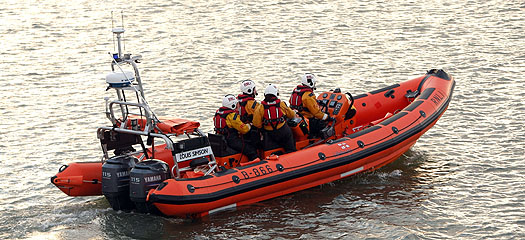
The new lifeboat at Skerries, an Atlantic 85, was dedicated and named the Louis Simson on September 7th. The Skerries station had 17 call-outs during the three summer months.
Of course there are those who will claim that, in many instances, talking of "rescues" would be over-stating the case. When a situation looks like being serious from the outset, the Coastguards – and particularly their helicopter – will get involved. In fact, so many genuinely life-saving events involve helicopters that it's surprising no-one seems to have thought of a rescue helicopter service service funded by charities. Maybe they have, but have found it would be impossibly expensive. In any case, with lifeboats, there's the obvious and stirring maritime link. "Those in peril on the sea" must be one of the most recognisable phrases known to us, and providing charity support to lifeboats is a direct and very satisfying way of connecting with it.
But the fact that the lifeboats receive so much of their funding from charity, and are manned largely by volunteers, adds to the moral overtones when any rescue is successfully carried through. And as we cannot know how even the most minor boat difficulty might go pear-shaped at some future stage, then if the lifeboat gets involved, the perception is that you've been rescued however minor the problem may have been, and notwithstanding the fact that the lifeboatmen themselves may phrase their report to spare the rescued crew's blushes.
The lifeboatmen's attitude is better safe than sorry, and much better safe even if just slightly embarrassed. But an analysis of the incidents in Irish waters is intriguing, and they provided some events with unwelcome publicity. For instance, the ISA's Gathering Cruise-in-Company from Dun Laoghaire towards Dingle in July experienced four different lifeboat call-outs.
The highest-profile incident was the rescue of the crew of 30 from the tall ship Astrid when her engine failed on the short hop from Oysterhaven to Kinsale in fairly rough conditions of onshore winds. One possible story suggests that prior to her arrival in Ireland, one of Astrid's fuel tanks had been accidentally filled with fresh water, which is something that can easily happen in a large and complex old sailing ship during a busy turnaround time in port. In line with their spirit of self-reliance, Astrid's crew had reportedly declined offers of professional assistance in making the tanks diesel-ready again. But despite their best efforts, it seems there might have still been a small quantity of fresh water left, quite enough to cause what became a catastrophic engine stoppage.
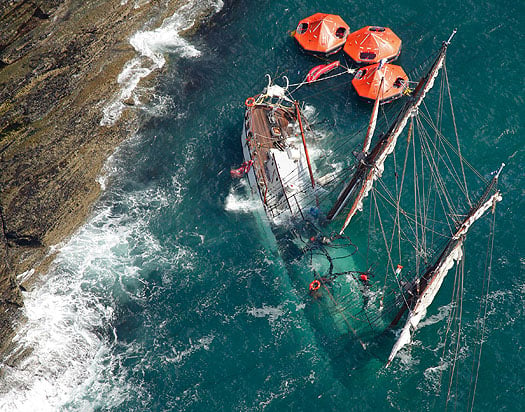
The end of a dream. The sinking of the privately-owned Dutch sail-training tall ship Astrid was a catastrophe, but it wasn't a tragedy as all 30 on board were efficiently rescued by the lifeboats. Photo: Bob Bateman
In fairness to The Gathering Cruise-in-Company, the Astrid sinking was a big ship event with which they became associated almost incidentally. But the three other call-outs were directly linked. The second most serious (after the Astrid) of the Cruise-in-Company's call outs was for the Ballycotton Lifeboat for an injured crewman on a 42ft yacht six miles southwest of the port. Injuries were such that the casualty was transferred by lifeboat to a waiting ambulance at Ballycotton, then as the injured person was a key member of the 42ft yacht's crew of three, the lifeboat returned to the cruiser and escorted her to port.
The other two lifeboat callouts for the Cruise-in-Company were to assist a yacht with her propellor fouled by a fishing pot marker off Kilmore Quay, and to tow in one of the participating boats after her engine had failed off Kinsale.
The hazard of getting fouled in fishing pot lines is even greater in Ireland than other similar places like Cornwall, where Ben Ainslie has written of his family's experience of having their fine yacht driven ashore at the entrance of the Helford River and getting badly holed on rocks, after the propellor had knotted itself in a lobster pot line. The lobsters and crabs along the Irish coast being even more prolific, it's a constant problem when under power, and there are few challenges more daunting than motoring in late afternoon straight into the sun on passage from Carnsore Point to Kilmore Quay, and knowing that the entire route is a maze of pot markers, some quite clearly defined, others lurking just below the surface in the strong tides, and all virtually invisible with the notorious brightness of the sunny southeast right in your eyes.
So for cruising in Ireland, an obvious solution is one of those cunning little cutting devices fitted to the propshaft to slice through any ropes, but even they can be defeated by too much rope. When it does happen, a serrated bread knife with the means of and quick and easy attachment it to the boathook can sometimes work wonders.
But the proliferation of cruisers with SailDrives exacerbates the problem. They may fulfil the designer's dream of having the propellor immersed as deeply as possible, and in clear water too, but it means they're perfect targets for wayward pot lines, and you need a diver or a liftout to get at them if they become fouled.
But do propellers really need to be so deeply immersed? After all, in motorboats they're close under the surface, and often reasonably accessible by long-arm methods from a dinghy. Admittedly with a sailing boat with her extra pitching through having a mast, there is a danger that a shallow-mounted propellor will come out of the water as she punches into a head sea. But for years I'd a share in the Contessa 35 with a high-mounted propellor well aft, and it never came out of the water while motoring in a head sea. Yet thanks to the boat's pintail stern - which had few other merits - you could just about reach the prop from the dinghy, whereas today's wide-sterned boats might preclude that. Whatever, in re-aligning the engine in my current boat, something which just had to be done when I discovered the builders had installed it at an angle of 21 degrees plus, when the manufacturers insist it should be no more than 15 degrees with 7 degrees is an ideal target, I now have a setup where the propellor can be reached by clambering down the stern boarding ladder.
All of which is little enough comfort for a cruising boat with a fouled propellor being rescued by the Kilmore Quay lifeboat during the Cruise-in-Company, but that in turn begs the question: Where were the other cruisers-in-company when this situation arose? The notion behind a cruise-in-company is that there's a feeling of mutual support, and minor problems can be dealt with by assistance from your fellow participants. But even in the companionability of a cruise-in-company, could it be that we've become so accustomed to hearing about the use of rescue services that even with buddy boats presumably near, an everyday get-you-home problem can still lead to an emergency call?
It seems to have happened with the lifeboat going to that engineless boat's aid off Kinsale and more recently the maritime community expressed shared embarrassment when the crew of a cruiser-racer of a notably able type called out the lifeboat when their engine failed as they sat becalmed off Wicklow Head.
But as boat numbers increase, professional privately-run services develop to meet the growing need for assistance like this. In boat-crowded places like Long Island Sound, and indeed on many parts of the coast of the USA, commercial assistance and get-you-home services have been a feature afloat for many decades. And anyone who has been around the Solent will be familiar with the SeaStart service, to which you can subscribe as a sort of insurance, and which now does commercially many of the tasks which used to take up too much of lifeboat time.
{youtube}VrqzFIfV1w4{/youtube}
Even the colours of their boats suggest that SeaStart is the same reassuring presence afloat as the AA is ashore.
Interestingly, SeaStart now sees its role as including the education of its less-experienced subscribers in order to raise their standards of boat and equipment maintenance, and improve their attitudes to sailing the sea. Yet because it's all being done by what is essentially a commercial organisation, those availing of its services don't feel themselves being morally oppressed by a do-gooder organisation or an interfering nanny state.
It works well in a densely-boat-populated area like the Solent region, but we have to face the reality that Ireland has an enormous and often rough coastline, and boat numbers are relatively very few, and often far between. So for now and the foreseeable future, most of us in day sailing, cruising and offshore racing are going to have to rely on self-regulation with a sensible attitude to seafaring, and the use of voluntary services supported by charitable donations in emergencies.
The situation is of course very different in inshore racing, where highly organised club rescue teams with their crash boats, and an admirable ethos of efficiency among their crews, set a standard of self-help and self-regulation which is a credit to our sport. But as soon as the scope of the event spreads from the purely local, and the boat-size goes beyond dinghies, we find ourselves interacting with national emergency and rescue services.
So in seeing the MOD 70 trimaran capsizing in Dublin Bay in June and observing the flurry of helicopter and lifeboat activity – all very necessary as two crew were soon in hospital, one for an extended stay with a severely fractured pelvis – we were seeing a new world. It's a situation very far removed indeed from the schooner America making her unaccompanied way across the Atlantic in 1851, with no contact with anyone until, without fuss or bother, she prepared for the historic race around the Isle of Wight which in its turn was sailed without any expectation of the use of rescue services.
And for those of us in the less exalted areas of personal choice sailing, it really is a matter of self-regulation if we are going to avoid having the authorities impose regulation upon us. In considering this disturbing 43% increase in lifeboat call-outs in 2013, it's difficult to avoid the conclusion that the only reason there aren't threatening rumbles of regulation and inspection from the government is simply because of the dire circumstances of the national finances.
Were we not in a situation of government cutbacks on every front, it's highly likely there'd already be some advisory body looking at ways of making the boating world adopt a more responsible, self-reliant and disciplined attitude towards its activities. That in turn would lead to an increased inspectorate and more supervision, with further erosion of the sense of freedom in sailing the sea. And in the end, it's boat people who would have to pay for it themselves. It's up to us to protect this activity we cherish so much, and to treat it with the respect it deserves.
#coastguard – A 21-year-old man from Crosby, Merseyside, has been awarded this year's UK Maritime and Coastguard Agency (MCA) Trainee Officer of the Year award.
Philip Cave, from Fleetwood Nautical College, whose training company is Princess Cruises, has been recognised for his dedication and achievements throughout his training.
The maritime industry is of crucial importance to the UK. It brings £14 billion per year to the UK economy. An essential part of this is the vibrant maritime training programmes available to train new seafarers.
The award aims to encourage and recognise quality within the maritime industry. Nominations are made by nautical colleges alongside the trainee's sponsoring company. The winner is decided by a panel of judges, including representatives from the MCA and other industry figures.
Philip said:
"Ever since I was invited onto the bridge eight years ago whilst on a cruise, I have wanted to be a Deck Officer, and qualifying as a 3rd Officer makes me feel that I have achieved my goal. I would like to thank my lecturers for their tireless and continuous support and Princess Cruises for giving me a First Class Cadetship. I know I have a great future to look forward to as a fully qualified officer with the company."
Philip Naylor, Director of Maritime Safety and Standards at the MCA, said:
"In presenting this award to Philip Cave, the MCA is absolutely delighted to recognise the enthusiasm, commitment and positive attitude that he exhibited at all stages of his training. These are qualities that will help to shape the future leaders of our maritime industry in the UK and which will ensure that we can maintain the UK's position of global leadership in maritime business.
"I would also like to offer Philip my very best wishes for an enjoyable and fulfilling career at sea."
James Hallé, HR Manager at Princess Cruises, said:
"During the last three years, Phil has been an absolute pleasure to deal with. A model cadet, Phil always conducted himself in a professional manner and has attained high academic results through nothing other than hard work and determination.
"Phil has been favourably reported upon during each of his ship appointments and I believe this is down to his respectful and courteous manner. Phil has developed in to a competent Junior Officer who will go from strength to strength. We are all very proud of him and wish him every success in his on going career."
The award was presented at the Marine Society and Sea Cadets Ninth Annual Court in London yesterday by Shipping Minister, Stephen Hammond MP.
HM Coastguard Modernisation Programme Announced
#coastguard – The timetable for completing the modernisation of Her Majesty's Coastguard has been announced.
The new national network is scheduled to be completed by the end of 2015, with the National Maritime Operations Centre (NMOC) operating from autumn 2014.
The introduction of the national network will enable the NMOC and all the other 10 Coastguard Operation Centres (CGOC) to work together to manage the workload on a national scale. This means in a search and rescue incident, even though the coordination will still be managed by the relevant CGOC, there will be a much bigger and better support network available nationally.
There will be no reduction in rescue resources, which remain unchanged by the modernisation of HM Coastguard. The availability of Coastguard Rescue Teams, lifeboats, rescue helicopters and other rescue assets will be unaffected.
A key outcome from the modernisation plan is more rewarding Coastguard jobs, with additional responsibilities and the appropriate pay to match.
Sir Alan Massey, Chief Executive of the Maritime and Coastguard Agency (MCA) said:
"This is an exciting time. We are moving into a new era for HM Coastguard that will reinforce the ability of our staff to ensure the safety of seafarers and the public. We want to continue being a world-class organisation that is committed to preventing loss of life, improving maritime safety, and protecting the marine environment. At the same time, our Coastguards can look forward to more satisfying and better rewarded careers.
"We realise that this whole change programme will be tough for some of our people, particularly those who feel that they have no future with HM Coastguard. We recognise that, and will do our very best to work with every individual to ensure they are properly equipped and supported in making the best decision for them.

